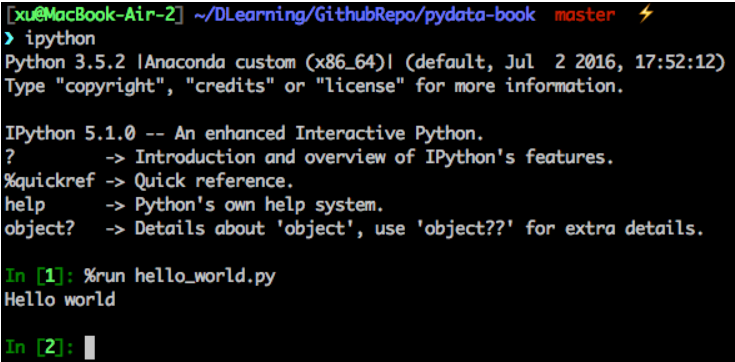2.1 The Python Interpreter (python interpreter)
2.1 The Python Interpreter
Python is an interpreted language. The Python interpreter can only run one command at a time. The standard Python interpreter environment can be entered by typing python (after typing python in the terminal, you can enter the interpreter):

>>> It is a prompt, telling you that you can enter commands. If you want to exit, you can type exit() or press Ctrl-D.
Running the python program is also very simple, just enter a terminal python+.py file. Suppose our hello_world.py file has the following content
print('Hello world')
You can run it with the following command (remember, hello_world.py must be in the current folder):

If you are doing scientific calculations and data analysis, we usually use IPython, which is an enhanced version of the python interpreter, and Jupyter notebook is a web-based code notebook, which is also developed from the IPython project. Here is a brief introduction to IPython and Jupyter and how to use it. For more information, see Appendix B. When we use the %run command, IPython will execute the file in the way of executing code, allowing us to visually see the result of the interaction:

The default IPython prompt will display numbers, such as the In [2]: in the picture, instead of the normal >>> prompt.
Recommended Posts